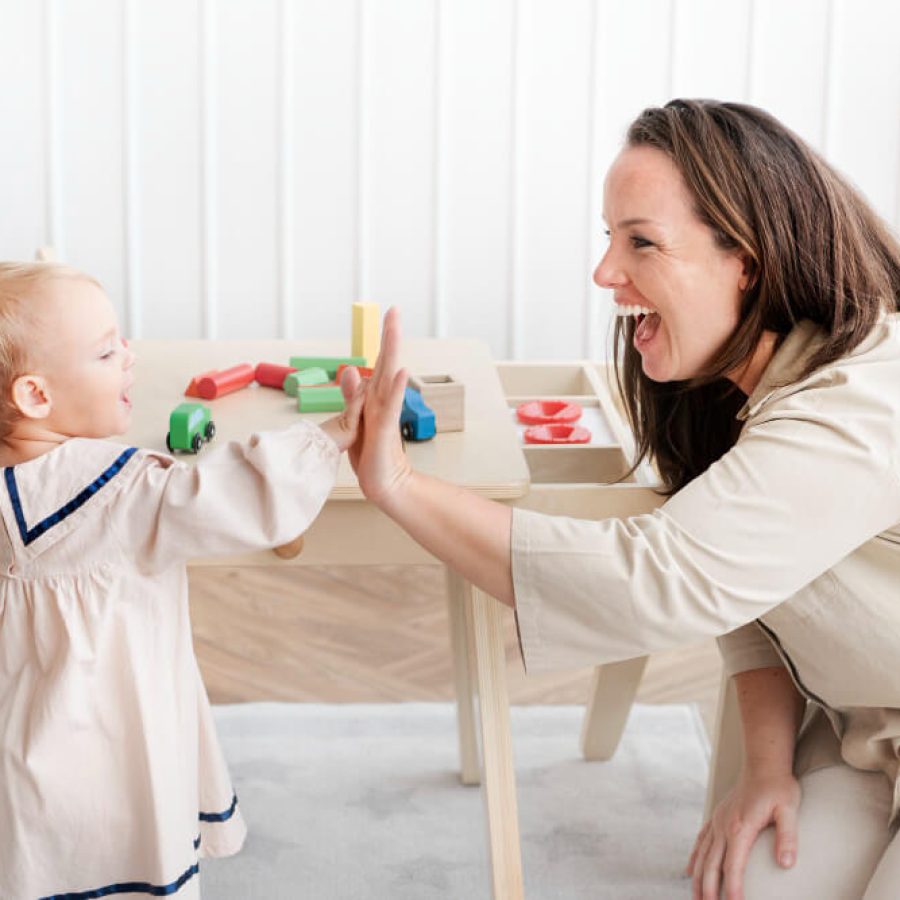Parents can feel really uneasy when thinking of the struggles their children might encounter. However, avoiding tough subjects like mental health and ignoring alert signs is certainly not the way to go. In that sense, understanding childhood psychological disorders is essential for every parent striving to support their child’s well-being.
These conditions affect how children think, feel, and behave, often influencing their ability to learn, connect with others, and feel confident in their daily lives.
In this article, we’ll explore common disorders that affect children at their early age so you can better recognize the signs and feel empowered to seek help when needed.
What Are Childhood Psychological Disorders?
Childhood psychological disorders are conditions that affect a child’s emotions, behavior, or ability to learn and connect with others. Not only does it interfere with their early years, but it can also have an impact on their adulthood.
There’s not a specific cause that results in children suffering from psychological disorders.
It’s hard to think of a specific prevention; however, the Centers for Disease Control and Prevention informs that fostering positive childhood experiences (PCEs) does have a beneficial result in decreasing the chances of aggravated psychological disorders in their future.
How Can You Tell the Signs of Psychological Disorders?
What draws the line between normal children’s behavior and the possibility of psychological disorder is intensity.
According to a publication in the MSD Manual, many disorders are recognized when they represent an exaggeration or distortion of behaviors considered normal.
Also, watch if it affects the child’s life for the worse: causes distress, puts them or people around them at risk, or affects their performance at school.
Keep reading as we’ll discuss specific warning signs that alert you when to seek help.
Most Common Childhood Psychological Disorders
ADHD (Attention-Deficit/Hyperactivity Disorder)
What it is:
ADHD is a neurodevelopmental disorder that affects a child’s ability to focus, stay still, and control impulses. It’s not just a case of being “extra energetic”, it’s a condition that can impact many aspects of a child’s daily life, including how they learn, behave, and interact with others.
Common signs in children:
Children with ADHD may seem to be constantly in motion, have trouble sitting still, interrupt others frequently, or find it hard to follow instructions. They may struggle to complete tasks, forget things easily, or make careless mistakes due to inattention.
Long-term impact:
If left unmanaged, ADHD can lead to academic difficulties, low self-esteem, and challenges in forming healthy relationships.
As children grow, they may continue to experience impulsivity and distractibility, but with proper support — such as therapy, routine, and in some cases, medication —, they can thrive in school and social settings.
Anxiety Disorders
What it is:
Anxiety disorders go beyond occasional worry or nervousness. These conditions cause intense, persistent fear or unease that can interfere with a child’s ability to function normally.
Common signs in children:
Children with anxiety might frequently express worries about school, family, or the future.
They may avoid social situations, cling to caregivers, or have physical symptoms like headaches or stomachaches with no medical explanation.
Separation anxiety is also common.
Long-term impact:
If not addressed, anxiety can limit a child’s willingness to try new things, form friendships, or handle everyday challenges.
Over time, untreated anxiety may lead to depression or other mental health issues. However, with early intervention and coping strategies, children can learn to manage their fears and feel more confident in their environments.
Autism Spectrum Disorder (ASD)
What it is:
ASD is a developmental disorder that affects how a child communicates, behaves, and relates to others. It’s called a “spectrum” because the symptoms and their intensity can vary widely from one child to another.
Common signs in children:
Children with autism may have delayed speech, avoid eye contact, or struggle with back-and-forth conversations.
They may also engage in repetitive behaviors (like hand-flapping or lining up toys) and show a strong preference for routine.
Social interactions can be difficult, and they may not easily pick up on social cues like facial expressions or tone of voice.
Long-term impact:
While autism is a lifelong condition, early support can greatly improve a child’s ability to communicate and adapt to social environments.
As they grow, many children with ASD can build strong skills in areas like problem-solving, creativity, or technology — especially when their unique strengths are nurtured in supportive settings.
Depression and Mood Disorders
What it is:
Depression in children is more than just feeling sad: it’s a serious condition that affects how a child feels, thinks, and behaves over time. Mood disorders may also include episodes of irritability, hopelessness, or mood swings.
Common signs in children:
Children may appear unusually sad, irritable, or tired. They might lose interest in favorite activities, withdraw from friends and family, or struggle with eating and sleeping patterns. Some may express feelings of worthlessness or guilt, even when nothing is wrong.
Long-term impact:
When not addressed, childhood depression can affect school performance, relationships, and overall well-being. It can also increase the risk of continued emotional challenges during adolescence and adulthood.
Thankfully, with therapy, family support, and sometimes medication, many children recover and build emotional resilience.
Post-Traumatic Stress Disorder (PTSD)
What it is:
PTSD can occur when a child experiences a traumatic or highly distressing event — such as abuse, an accident, or the loss of a loved one. Their emotional response to the trauma can continue long after the danger has passed.
Common signs in children:
Children with PTSD may relive the event through nightmares or flashbacks, become easily startled, or avoid reminders of the trauma.
They might have sudden mood swings, seem emotionally numb, or act out aggressively without clear reasons.
Long-term impact:
PTSD can affect a child’s sense of safety and trust, making it harder to concentrate in school or form healthy relationships.
Over time, if left untreated, these emotional wounds can deepen. But with trauma-informed care and a supportive environment, children can heal and regain a sense of security and self-confidence.
How Parents Can Support Their Child
Just as PCEs have a positive impact on a child’s life, ACEs (or adverse childhood experiences) can undermine their chances of a prosperous and healthy development.
Although there isn’t a specific formula to prevent our children from being affected by anxiety, ASD or any other cited disorder, there’s no question that a happy and safe childhood does have constructive outcomes.
Even if we can’t protect our children from all harm, building meaningful ties while they’re growing is crucial so that they know they are safe next to their family, that they’ll be accepted and have a support network right by them.
When to Seek Help To Deal With Childhood’s Mental Health Disorders
Just as it happens with adults, the problem happens when there’s excess. If a child’s emotions and behaviors frequently seem exacerbated, that’s a sign that something’s off and requires investigation.
The National Institute of Mental Health lists a few behaviors that indicate when children could benefit from a specialized evaluation from a psychologist.
- Emotional signs: frequent tantrums or irritability or sleep issues.
- Behavioral signs: in constant motion/cannot sit quietly, repeating actions, compulsive behaviors such as constantly checking things or worrying that something bad might happen.
- Social difficulties: lack of interest in playing with other children or difficulty making friends.
- Physical symptoms can also show such as frequent stomachaches or headaches.
The importance of early support
According to specialists*, if a child gets the right support early on, it decreases their chances of developing a clinical disorder as they grow older.
Mood disorders, such as anxiety, can also be eased in adolescence and adulthood if properly managed during childhood.
Caring for our Children’s Mental Health
Childhood psychological disorders are not a testament that binds children to suffer for the rest of their lives. It’s perfectly possible to grow, develop and thrive even if children do get diagnosed.
The best thing parents can do is pay attention to any early signs of disconnection, seek specialized help and stand by their kids in their time of need.
Feeling inspired in continuing to learn what your child needs to reach their full development? Keep reading and understand the importance of a child’s first five years.
*Sources


